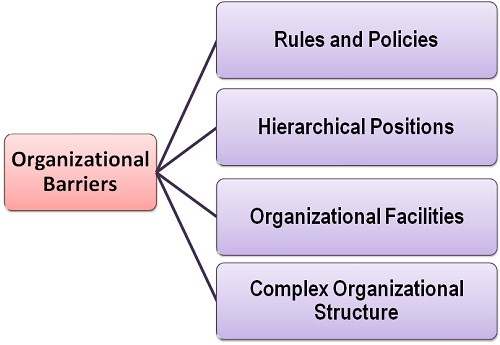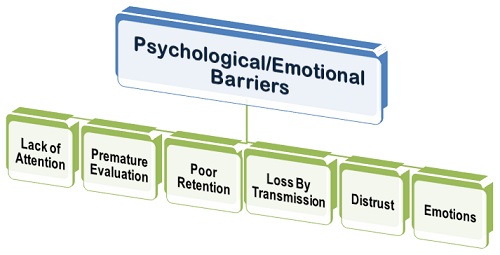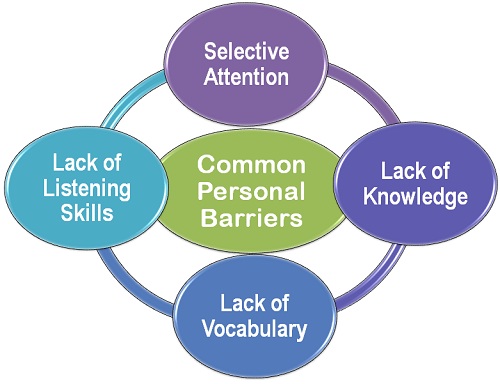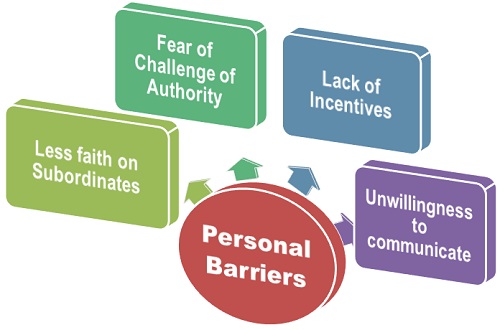BARRIERS TO EFFECTIVE COMMUNICATION
Communication is said to be complete only when the recipient gets the message the way the sender intends it to be. When information is not received the way it was intended then it has been distorted. Distortion of a message is brought about by some communication barriers which may exist in the path of the message between the sender and the recipient.
There are several barriers to effective communication which are classified as:
- Semantic Barriers
- Organizational Barriers
- Psychological or Emotional Barriers
- Personal Barriers
SEMANTIC BARRIERS
The Semantic Barriers refers to the misunderstanding between the sender and receiver arising due to the different meanings of words, and other symbols used in the communication.
Following are the main language barriers:
- Bad Expression
- Symbols, or Words with Different Meanings
- Faulty Translation
- Unclarified Assumptions
- Denotations and Connotations
- Technical jargons
ORGANIZATIONAL BARRIERS
The Organizational Barriers refers to the hindrances in the flow of information among the employees that might result in a commercial failure of an organization.
The major Organizational Barriers are listed below:

- Organizational Rules and Policies
- Status or Hierarchical Positions in the Organization
- Organizational Facilities
- Complex Organizational Structure:
PSYCHOLOGICAL BARRIERS
The Psychological or Emotional Barriers refers to the psychological state i.e. Opinions, attitudes, status consciousness, emotions, etc. of a person that deeply affects the ability to communicate.
The main kinds of Psychological or Emotional Barriers are:

- Lack of Attention
- Premature Evaluation
- Poor Retention
- Loss by Transmission
- Distrust
- Emotions
PERSONAL BARRIERS
The Personal Barriers relate to the factors that are personal to the sender and receiver and act as a hindrance in the communication process. These factors include the life experiences, emotions, attitudes, behavior that hinders the ability of a person to communicate.
The most common personal barriers are:

- Lack of Listening Skills
- Selective Attention
- Lack of vocabulary
Barriers Related to the Superiors in the organization
- Less faith in subordinates
- Fear of challenge of Authority

Barriers related to the subordinates in the organization
- Lack of Incentives
- Unwillingness to communicate with the Superiors
Note: For Mobile phone users, use Chrome or Firefox browsers for better view of the complete pdf notes below
Related notes:
